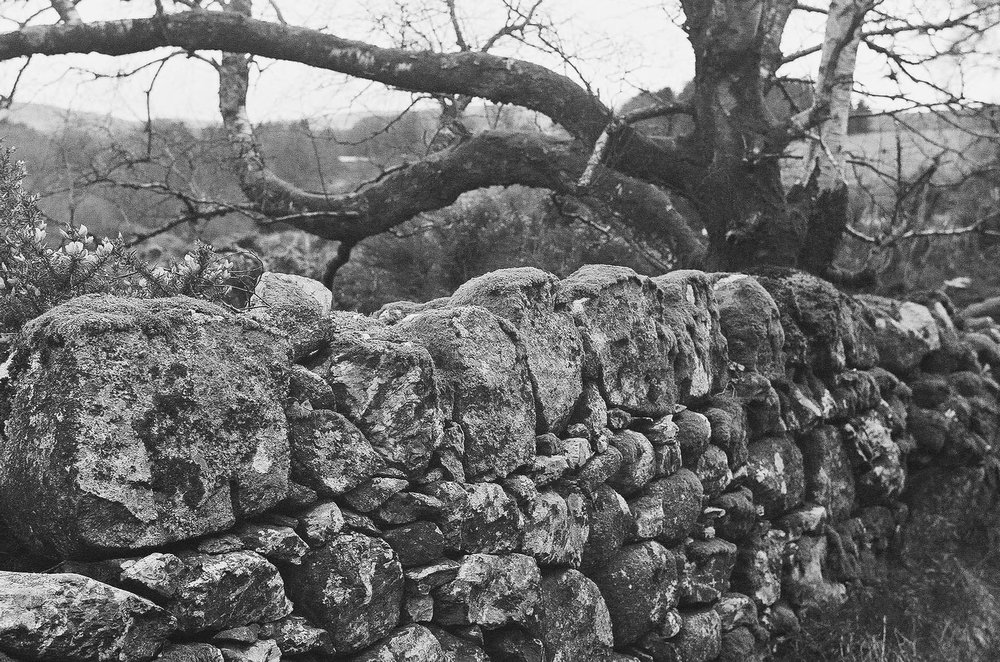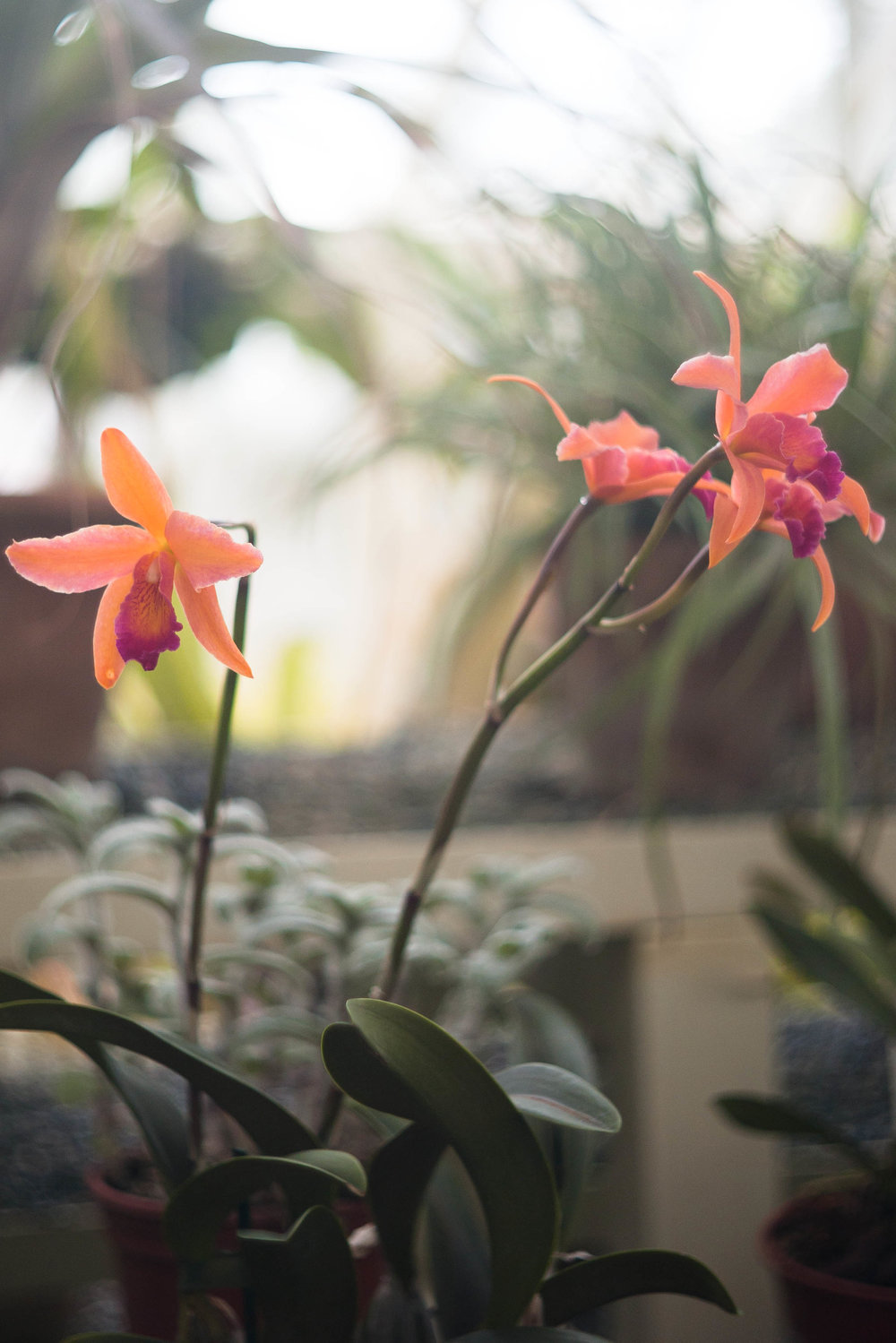
The Leitz Summar: A lens which has an undeserved bad reputation among Leica collectors. I’m not entirely sure why so I am taking a look at some aspects of the Summar that may have been overlooked. As I now have eight Summars in my collection, I feel that I must say something on behalf of this wonderful lens.
The top photograph is of the Just Joey Rose in my back garden. It is one of my wife’s favourites as our grandson’s name is Joe. Apologies to rose lovers everywhere for taking a photo of a rose in its dying hours, but the object was to demonstrate the bokeh from my newly acquired Leica Rigid Summar (used on an M240 camera). Apologies also to all lovers of Thomas Moore’s Irish Melodies for appropriating the title of one one of his most famous works, which has been borrowed by many others ranging from Ludwig van Beethoven to Kanye West
Like Moore’s composition, the Summar is not new. It was introduced in a rigid version in 1933 but this was rapidly replaced by the much more common collapsible design. Indeed, people who had the rigid version could get their lens “upgraded” to the collapsible version. Since around 2,000 of the rigid version were produced and, with the upgrade programme as well, they are now quite rare and fetch many times the price of the collapsible lens in the collector market. By comparison over 120,000 examples of the collapsible version were produced.
Soft glass
The Summar was Leica’s first f/2 lens. It has six elements but the front one has quite soft glass which was prone to scratching when cleaned (with the photographer’s tie, perhaps). Hence there are quite a few examples around which are not in such good condition and the lens has got an unjustifiable ‘bad rap’. I mentioned in an article on this site about auctions and collecting some time ago that I had an ‘accidental collection’ of Summars which included at least five out of the ten variants listed by Paul-Henry van Hasbroeck in his book Leica: A History illustrating every Model and Accessory.
Black rim
The photo above shows the first six on my Summars and it featured in my earlier article about on-line camera auctions.
The variants here include not only feet and meter scale but also a nickel version, a black-rim variant and also other oddities including an indent and an f/2.9 stop for the then new (and short-lived) Agfa colour process with tri-colour filters; and also infrared markings on some but not on others. The sixth Summar in the ‘naughty corner’ at the back and wearing the SOOMP hood as a dunce’s cap is, in fact, a hybrid with the mount of one variation and the lens head of another one. These were an accidental collection, since, apart from the one with the black rim, the rest all came attached to various LTM cameras that I had purchased and it was only afterwards that I noticed the variations.
The first one came on a II Model D and the picture below is from the first roll of film that I took with the camera.
Not only did the lens capture wonderful detail on the wall, something about the slightly out-of-focus branch behind told me that this lens might have some interesting bokeh possibilities. I mounted the Summar on an M8 and took it to our National Botanic Gardens in Dublin to see how it would work as a recorder of flower specimens.
I might add that I believe that bokeh is somewhat over-lauded nowadays but it can add atmosphere to a shot. Tastes in bokeh vary. Some like smooth, some like busy and others like something in between. The great thing about the Summar is that you never know what it will throw up until you take a shot. And it also varies according to the aperture used. The first example below was taken in the Palm House at the National Botanic Gardens in Glasnevin in Dublin. It was shot fairly wide open and the plants in the background form a wonderful (to me anyway) swirly haze.
The next photo was taken outdoors at the same venue and the lens was stopped down to f/8 or even f/11.
Two for the price of one
The hexagonal iris shape can be clearly seen here. Also to be noted are the out-of-focus areas behind. They are, in fact, part of a lily pond. The stopped-down Summar has rendered the lily pond as if it were a flowing stream in this picture. Two different bokehs for the price of one, as it were.
My next purchase was the following lens which is coated and has a strange red dot (no, not that Red Dot!) and is shown here on a Leica IIIa with a SCNOO (I got a nice ESOOR case for the SCNOO recently to match the one I have for the Leicavit; perhaps another article lies there).
The coating gives the output from this lens more of a modern look. This would probably please most users but I find there is something in the look of the older uncoated lenses which is also really attractive. I must admit that I often iron out this look in Lightroom by adding saturation and sharpening to taste, but it is nice to be able to use the traditional look when my humour leans in that direction.
The most recent addition to my Summar collection is, in fact, the oldest one I possess. It is a Rigid Summar from 1933 which I purchased last week from Ivor Cooper at Red Dot Cameras In London. It looks really well here on a late 1932 Model IID. I think the black-enamel-with-nickel-furniture cameras from that period are the nicest ones ever made by Leica.
Choice
Ivor had two examples and I chose this one because it had that ‘old look’. The rigid model has a narrow base and using an adaptor without an indent meant that infinity focus would not work well as the infinity lock area is quite wide. I have an adaptor with an indent at home which I thought would not work with the M240 but, in fact, it does. I do not get a ‘no lens attached’ message using this. Perhaps I made some menu adjustment, but, if I did, I have now forgotten what it is. Indeed, I find that using the indented adaptor and the EVF gives much better focus accuracy at distance with this lens. It is even better on the Fujifilm X-Pro 2 where it is well away from the body due to the additional distance provided by the Fuji to Leica M adaptor. I have yet to try the lens on its true home, an LTM model.
I bought this mainly as a collector’s item, of course, but I could not resist taking a photo of the esteemed editor of Macfilos at the Leica Society event in Mayfair last week.
You will see that the bokeh behind Mike’s head is quite smooth. The early rigid Summars had a round iris as against the hexagonal one in later variations. This can give some very smooth bokeh except where the background is quite varied with different patches of light coming through as in the ‘Last Rose’ photo at the top of this article. There the bokeh is quite busy, but it has enough of the characteristic ‘Summar Swirls’ to satisfy my taste.
I am both a collector and user of Leica cameras and lenses. Would I recommend buying one of these lenses to use instead of the usual Summicron or Summilux? I’m afraid that my answer would be, no. However, if you have one of these lenses in your collection and the requisite adaptor, I would certainly recommend taking it out on your latest digital wonder and shooting at a range of apertures. I can guarantee what you will get is something that no modern lens can provide. Remember the lens is sitting in your bag or press or on a shelf just waiting to show what an ‘old guy’ can do.
_______________
- Subscribe to Macfilos for free updates on articles as they are published. Read more here
- Want to make a comment on this article but having problems? Please read this








Thank you for an enjoyable and informative review! I recently bought a coated Summar lens with the ‘blue’ coating and a CLA a year ago. I used it on my SL3-S camera with the M-L adapter and the thread mount to M 50mm adapter. The first test shots look great, and the focus aid on the camera is very useful. I see potential problems when changing aperture, and the interesting feature on my copy is that what seems like too much stiffness of the aperture ring is greatly improved if I apply slight pressure on the ring towards the lens base while rotating it to change f stop. I do see that even with this method, it is possible to also rotate the lens barrel such that it is no longer locked in full extension and shortens. So, re-locking in the barrel is something to be aware of when changing aperture. Another quirk in addition to the non-standard f-stop options e.g., f 4.5, not f4 or f5.6.
Thanks for the information. It was very helpful. I just purchased a Leica IIIC for $100 and the Summar came with it. I will definitely put it through it’s paces.
Dear Mk,
I can affirm what David B. suggests is the cause of the problem; failure to fully lock the extended lens in position. I have a Summar that for years exhibited the same issue, sometimes sharp, sometimes not. Could not figure out what was going on. Only yesterday, literally, I realized I was getting extremely sharp images because I had made sure the lens barrel was locked in position. Thinking about it, I came to the conclusion that I “unlocked” the lens when changing or setting the f stop.
Hi! I have two of these and I keep finding that every time I put it on my camera and pull it out it is not focusing (it is either back focusing or front focusing). I have two and have had them both serviced and they both do it so I know it is likely user error but I can’t find any tips on what I could be doing wrong online… when I first got them they worked well enough, also the case when I got them back from servicing, and then when I take it off and put it back on later it is always an issue! It’s driving me nuts – any tip would be great
Dear Mk,
It might seem a silly question, but when you pull out the lens, do you then twist it to lock it in its extended position? The twist ensures that it’s positioned at exactly the right distance from the film or sensor.
(If it’s NOT at exactly the right distance, that might account for your variation in front- or back-focusing.)
I have two Summars, one Nickel and one Chrome. They are both pin sharp. I am only the second owner of the Chrome Summar having acquired it in 1981 from the original owner who bought it in 1936. The only issue with these lenses is the lens cement which can sometimes cause a clouding of the lens but which can be rectified by a Leica specialist. I have had several Summicrons and I couldn’t recognise any beingt were sharper than the Summars. Only one lens I think was slightly sharper and that was a Zeiss 50mm Planar on an early Contarex Cyclops. I still use both the Summars on a chrome Leica III and and a black Leica III. I always use a lens hood.
Nice!
Well I agree; I tested the Summar 5cm & Hector 73mm in 2009 on a MFT lumix G-1. Both examples I serviced inside the lenses , reassembled and tested. I was amazed what results, I got! I used sunshades of course! If you dont use a proper sunshade, your crazy. I always us modified Rubber collapsible types. Uncoated lenses suffer from lens flare. with sunshades the results have a slightly softer contrast and amazing bokeh in the background. The image is very sharp in the center and falls off to the edges. Since 2009, I have both lenses modified for FF Sony A7r mirrorless body and they are even better. Lets be honest, why do I get modern results from 1930’s lenses? Direct light path to digital chip, manual focus assist at 7x on the Sony A7r. Conclusion is Rangefinder coupling in 1930’s and 1940’s gave the collimation a large error! Only DOF at f;8 could over come it. Used at F:2 in the 1930’s was a disappointment; and Summar 5cm and Hektor 73mm was given an unjustified bad reputation! by the 1950’s advanced lens coatings and better rangefinder collimation on the M3 gave the illusion that 1950’s lenses from leica were superior. Actually I have proven this is false data!
Every 25 years a lens MUST be cleaned inside! A Sunshade is a MUST! The sun on your back is a golden rule! Old lenses have a treasured Bokeh that modern lenses designed out! Ultra sharp, ultra corrected is often; ultra contrast is ultra boring. The Summar 5cm and the Hektor 73mm is a great lens!
Agreed. The new norm is to eliminate ‘faults’, but these are what make life interesting, not just in the case of camera lenses. The hoods for the Summar and Hektor are rather large, but I agree that having hoods on helps on a sunny day. Cleaning lenses that are in bad condition helps too, but I prefer to leave lenses that are in original but good condition the way that they are. You are right about the ‘bland leading the bland’ in modern camera equipment, but that is what the market demands, unfortunately.
William
What a great article William. You’ve kept me up long after bedtime. Now I must resist ringing Ivor!
William, Thank you for a very interesting Summar article. My Summar is buried in my safe but deserving of a trip out with the SL or T – so will use it asap when have selected a suitable subject.
Regards
dunk
Thanks Dunk. Any time is Summar time in my book. Don’t forget to try some shots with the lens wide open or nearly there to see what your Summar reveals in the out of focus areas. I have not tried it with the T or SL as I don’t have those cameras, so I would be interested in seeing your results.
William
To John: Thanks. When I took the picture of Mike with an 83 year old lens, we joked about the lens being older than either of us. I boosted the contrast using the de-hazing tool in Lightroom but I prefer the original, which is shown here, with our esteemed editor in a nice warm old lens glow.
To Nico: I only have one Summitar and it is a wartime one which has been coated. It gives a more modern look than a Summar, approaching the look from the early Summicrons. See my article about 1930s Leicas on this site for a photo taken with the Summitar. It is the photos of flowers (it seems to be all flowers this week!) taken with the NOOKY-HESUM close up attachment. The Summar will provide sharp images, but they will not be super sharp or heavily saturated, particularly if the lens is not coated. Where the Summar really scores is with the out of focus areas where it can give surprising results depending on the aperture used and the subject matter. No other Leica lens has quite the same capacity to surprise and delight. If you are going to buy a Summar to use with a digital camera, I suggest that you bring an adaptor to the store and fire off a few test shots at various apertures, including some into the light to detect potential flare.
William
Thanks William! I have a Summitar, which I use on a M8 and M240, and I like the results. A lot! I am interested in getting a Summar, but if the two lenses were more or less similar, that would’ve been a waste of money. But it seems the Summar is different 🙂
Hi William, when you compare the Summar with a post-war, coated Summitar, which one do you prefer? Is there a significant difference between to two?
cheers, Nico
Thank you, you always post interesting articles and thank you for picture of himself, forwarded to my daughter so she could see who has been helping us.